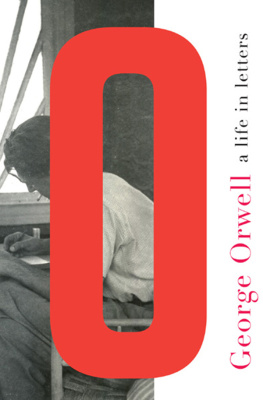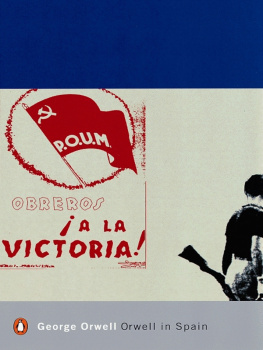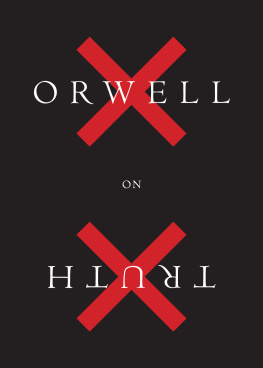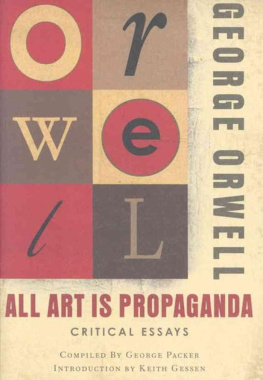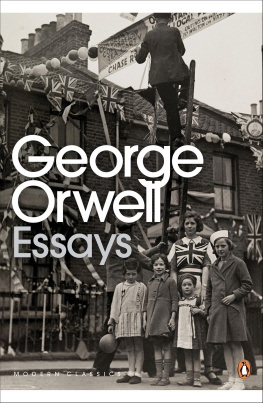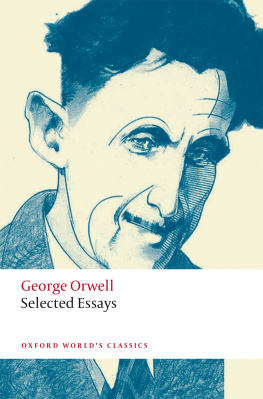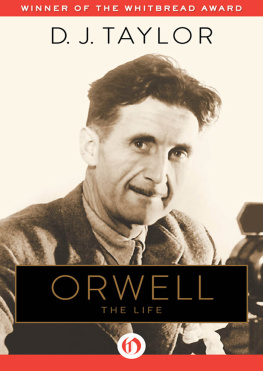George Orwell - George Orwell: A Life in Letters
Here you can read online George Orwell - George Orwell: A Life in Letters full text of the book (entire story) in english for free. Download pdf and epub, get meaning, cover and reviews about this ebook. year: 2013, publisher: Liveright, genre: Detective and thriller. Description of the work, (preface) as well as reviews are available. Best literature library LitArk.com created for fans of good reading and offers a wide selection of genres:
Romance novel
Science fiction
Adventure
Detective
Science
History
Home and family
Prose
Art
Politics
Computer
Non-fiction
Religion
Business
Children
Humor
Choose a favorite category and find really read worthwhile books. Enjoy immersion in the world of imagination, feel the emotions of the characters or learn something new for yourself, make an fascinating discovery.
- Book:George Orwell: A Life in Letters
- Author:
- Publisher:Liveright
- Genre:
- Year:2013
- Rating:3 / 5
- Favourites:Add to favourites
- Your mark:
George Orwell: A Life in Letters: summary, description and annotation
We offer to read an annotation, description, summary or preface (depends on what the author of the book "George Orwell: A Life in Letters" wrote himself). If you haven't found the necessary information about the book — write in the comments, we will try to find it.
Appearing for the first time in one volume, these trenchant letters tell the eloquent narrative of Orwells life in his own words.
From his school days to his tragic early death, George Orwell, who never wrote an autobiography, chronicled the dramatic events of his turbulent life in a profusion of powerful letters. Indeed, one of the twentieth centurys most revered icons was a lively, prolific correspondent who developed in rich, nuanced dispatches the ideas that would influence generations of writers and intellectuals. This historic worknever before published in America and featuring many previously unseen letterspresents an account of Orwells interior life as personal and absorbing as readers may ever see.Over the course of a lifetime, Orwell corresponded with hundreds of people, including many distinguished political and artistic figures. Witty, personal, and profound, the letters tell the story of Orwells passionate first love that ended in devastation and explains how young Eric Arthur Blair chose the pseudonym George Orwell. In missives to luminaries such as T. S. Eliot, Stephen Spender, Arthur Koestler, Cyril Connolly, and Henry Miller, he spells out his literary and philosophical beliefs. Readers will encounter Orwells thoughts on matters both quotidian (poltergeists and the art of playing croquet) and historicalincluding his illuminating descriptions of war-shattered Barcelona and pronouncements on bayonets and the immanent cruelty of chaining German prisoners.
The letters also reveal the origins of his famous novels. To a fan he wrote, I think, and have thought ever since the war beganthat our cause is the better, but we have to keep on making it the better, which involves constant criticism. A paragraph before, he explained that the British intelligentsia in 1944 were perfectly ready for dictatorial methods, secret police, systematic falsification of history, prefiguring the themes of 1984. Entrusting the manuscript of Animal Farm to Leonard Moore, his literary agent, Orwell describes it as a sort of fairy story, really a fable with political meaningThis book is murder from the Communist point of view.
Hardly known outside a small circle of Orwell scholars, these rare letters include Orwells message to Dwight Macdonald of 5 December 1946 explaining Animal Farm; his correspondence with his first translator, R. N. Raimbault (with English translations of the French originals); and the moving encomium written about Orwell by his BBC head of department after his service there. The volume concludes with a fearless account of the painful illness that took Orwells life at age forty-seven. His last letter concerns his son and his estate and closes with the words, Beyond that I cant make plans at present.
Meticulously edited and fully annotated by Peter Davison, the worlds preeminent Orwell scholar, the volume presents Orwell in all his varieties and his relationships with those most close to him, especially his first wife, Eileen. Combined with rare photographs and hand-drawn illustrations, George Orwell: A Life in Letters offers everything a reader new to Orwell needs to knowand a great deal that diehard fans will be enchanted to have (New Statesmen).
28 illustrationsGeorge Orwell: author's other books
Who wrote George Orwell: A Life in Letters? Find out the surname, the name of the author of the book and a list of all author's works by series.

